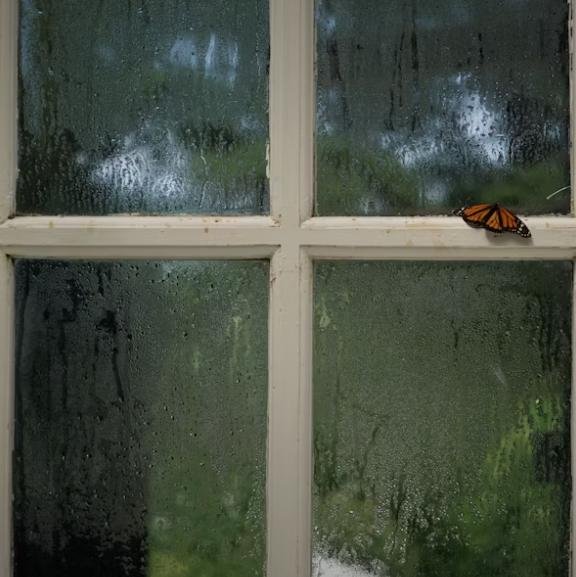
Does Condensation on Windows Mean They Need to be Replaced?
Condensation on your windows may seem like a minor inconvenience, but it can serve as a red flag for underlying issues with window sealing.
In this blog post, we'll examine the dangers of window condensation, reviewing the various types and what they may signal about your home's environment. We'll also provide practical tips on how to reduce window condensation and improve the overall performance of your windows.
From interior condensation caused by excess moisture to exterior condensation indicating poor insulation, recognizing these signs is critical for maintaining a comfortable and efficient living space.
What is Window Condensation?
The occurrence of window condensation arises when airborne moisture encounters a surface, such as a windowpane, and transitions into water droplets. This occurrence of condensation is at its peak during cooler seasons when the temperature contrast between indoor and outdoor surroundings.
Condensation can cause various complications in your home: excessive moisture accumulation on windows can harm adjacent walls and ceilings, potentially leading to structural deterioration if left unattended. Moreover, it fosters a habitat for the growth of mould and mildew, posing health hazards and necessitating costly remedial measures.

Condensation may materialize in different regions of your window, each indication hinting at potential underlying issues. Interior condensation indicates elevated indoor humidity levels, inadequate ventilation, or deficient insulation. Conversely, exterior condensation typically signifies inadequate insulation or sealing encircling the window frames, allowing warm indoor air to escape and condense upon the cooler glass surface.
Causes of Condensation on Inside of Windows
The gathering of moisture on the interior of window glass is a common sight, often prompted by the difference between warm, moist air and its cooler, drier counterpart interacting. Condensation building-up on inside of windows worsens during periods of heightened humidity, when moisture levels indoors naturally soar.
As warm, moisture-laden air meets the cooler window surface, it cools down, creating condensation on the inner side.
Everyday activities, such as bathing and cooking, serve to intensify indoor humidity levels, thereby compounding the challenge of condensation. Boiling water, in particular, releases a significant volume of moisture into the air, creating an ideal environment for condensation to form. Moreover, issues in window seals, such as cracks or crevices around the frames, provide a pathway for warm, humid air from the outside to infiltrate, increasing the likelihood of indoor condensation accumulation.
Poor air circulation further worsens indoor window condensation, as it confines moisture within the living space. Additionally, windows lacking adequate insulation exacerbate the temperature differential between indoor and outdoor environments, worsening condensation issues.
Furthermore, condensation on the inner surface of windows may signify deeper underlying issues with indoor humidity levels, potentially fostering the growth of mould and mildew if not promptly addressed.
What Causes Condensation on the Outside of Windows?
While less common than interior condensation, condensation can also occur on the outside of windows under specific conditions. One primary factor contributing to condensation on outside of windows is the absence of wind, or very minimal airflow outdoors.
When air is stagnant, moisture from the surrounding environment can accumulate on window surfaces, leading to condensation formation. Additionally, the cooling of warm or moist soil outside can create a temperature differential with the window glass, causing moisture to condense on the exterior surface.
Furthermore, dew evaporating from windows in the morning can contribute to exterior condensation, especially in areas with high humidity levels. While exterior condensation is generally less concerning than interior condensation, as it typically indicates external environmental factors rather than issues within the home, it can still be a nuisance and may warrant attention, particularly if it occurs frequently or excessively.
Addressing any underlying insulation or sealing issues around windows can help minimize exterior condensation and ensure optimal performance and durability of window systems.
Does Condensation on Windows Indicate They Need a Replacement?
Condensation forming on windows doesn't automatically warrant a complete replacement, as targeted interventions can often suffice. However, if condensation persists alongside visible indications of sealing troubles, such as noticeable drafts or difficulty in operating the window, then replacement might be inevitable.
For homeowners grappling with such dilemmas, seeking assistance from professionals like Big City Windows and Doors in the Ottawa Valley and Gatineau region can prove invaluable. Our proficiency in window and door installations enables us to accurately diagnose and rectify sealing issues, ensuring optimal functionality and comfort.
Promptly addressing sealing concerns is imperative for homeowners to avert further deterioration and uphold a pleasant indoor atmosphere. Therefore, while condensation alone may not always necessitate replacement, tackling underlying sealing problems is important for the sustained use of windows.
How Can You Stop Condensation on Windows
Condensation on windows can indeed be quite bothersome, but fear not – if you're wondering how can you stop condensation on windows, there are many strategies homeowners can deploy, particularly if the root cause isn't stemming from sealing issues.
Balancing Outdoor & Indoor Temperatures
One effective technique to diminish window condensation involves monitoring both indoor and outdoor temperatures, coupled with adjustments to indoor heating or cooling systems. By meticulously ensuring that indoor temperatures maintain a delicate equilibrium not excessively deviating from outdoor conditions, homeowners can substantially lower the temperature differentials that fuel condensation formation.
This balance can be achieved through the use of programmable thermostats, or manual adjustments tailored to prevailing weather conditions.
Trim Down or Transplant Shrubs Away from Windows
Another approach to window condensation is the outdoor elements that contribute to moisture buildup.
Shrubs and foliage in close proximity to windows can exacerbate condensation when dew on shrubs & foliage evaporates onto window surfaces. To effectively counteract this, homeowners should consider pruning, or even relocating, these shrubs to areas further removed from windows.
By removing the moisture source adjacent to windows, the abundance of water vapour available for condensation reduces considerably, thereby lowering the amount of external condensation build-up on windows.
Keeping Windows Open While Cooking
Proper ventilation is critical when it comes to regulating indoor humidity levels and thwarting the buildup of condensation.
During activities that cause moisture production, such as cooking, bathing, or indoor clothes drying, homeowners can foster ventilation by leaving windows open. This helps the escape of moisture-laden air, that can cause condensation build-up.
Furthermore, the use of exhaust fans in kitchen and bathroom spaces can support in expelling moisture.
Contact Big City Windows and Doors for Your Next Window Replacement
If you're grappling with heavy window condensation, remember it might not always necessitate window replacement unless there are sealing issues.
For expert guidance on whether your windows need replacing, reach out to our team at Big City Windows and Doors. With our expertise, we can assess your situation and provide tailored solutions to ensure your home remains comfortable and energy-efficient.
Don't hesitate to contact Big City Windows and Doors for your next window replacement project.



